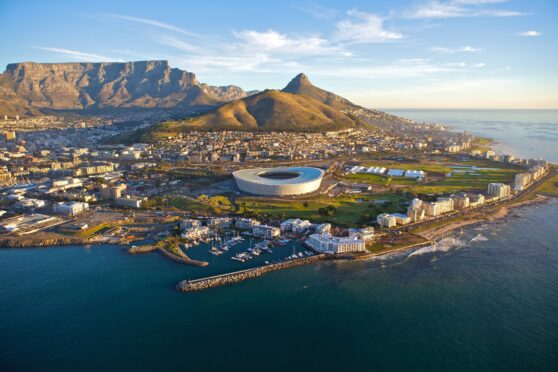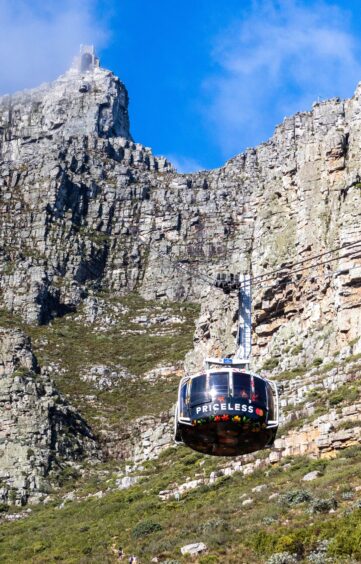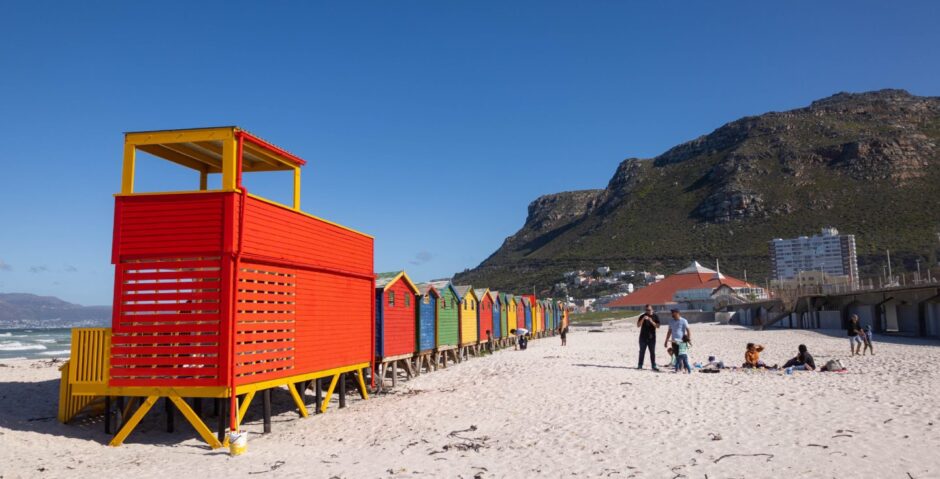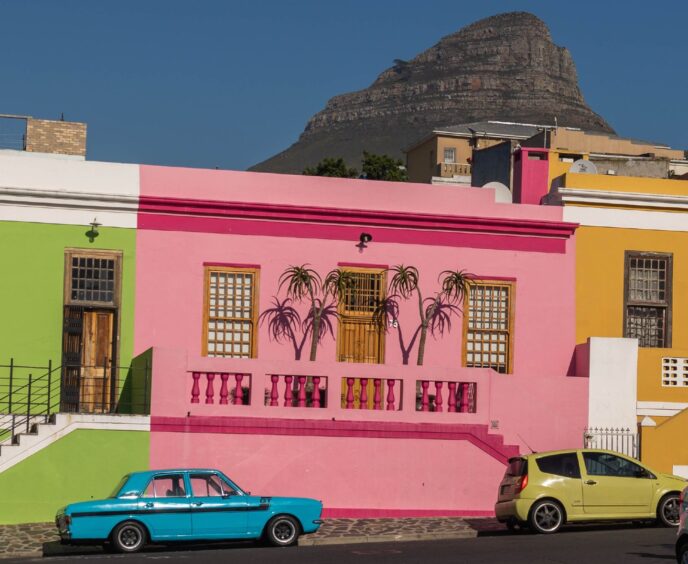
Known as the Mother City, Cape Town is not the average holiday destination and while it is a similar long-haul flight time from the UK as Cancun or Florida, it attracts a different type of visitor.
The city centre is the typical metropolitan mix of skyscrapers, but you don’t need to go far to enjoy sights such as the Bo-Kaap District, with its streets full of multi-coloured houses or the Victoria and Alfred waterfront area with a vast choice of shops, arts and crafts areas, musical stages and cruises.
The top destination is Table Mountain, which can be reached by cable car, but as this is the southern hemisphere and our summer is their winter, this closes for up to six weeks around July and August for annual maintenance.
The weather in June, July and August is similar to ours in summer, but normally a little warmer although a few days of rain is possible. The city is dominated by three hills, of which Table Mountain is the highest, and which also has its own microclimate, with the top of the 1,086-metre peak often shrouded in cloud – the infamous tablecloth. In the middle is Lion’s Head at 669 metres and this is reached by a hiking trail only, however to reach the top involves the use of ladders and chains and is not for the faint of heart!
Signal Hill, by comparison, is easily reached by bus or car and is a very popular location for paragliding or watching the setting sun.
Table Mountain, which has many hiking trails, is at the top end of a 50-mile national park which extends down to the Cape of Good Hope, and is the most south western point of the continent. If visiting by car, the entrance gate is around seven miles from the point, and the same to the funicular which takes you up to the lighthouse and where there is also a small visitor centre and cafe.
There are several ways to reach the Cape of Good Hope from Cape Town. One is by the motorway to Muizenberg, which has a fantastic beach and is also the surfing capital of South Africa, and then down the coast. There is also a fast and frequent train service to Muizenberg, which extends along the coast to Simon’s Town. As this was the Royal Navy’s main south Atlantic base during British Colonial rule, and only handed over to South Africa in 1975, the town’s architecture has a very British look to it.
Just along the coast is Boulders Beach, home to the famous African Penguin and which has grown from one breeding pair in 1982 to a colony of around 3,000 birds.
Elevated walkways allow you to view the penguins in their natural habitat, and you can also see them in their concrete nests as well as swimming in False Bay or clambering over the huge boulders in the area. Parking is limited and entrance is by card only and while entry is around £9 for an adult, this is four times what South African residents pay. This is similar to the Cape of Good Hope entrance, where international visitors pay £17 per person and South African citizens pay just over £4.
The return journey can be taken using the spectacular Chapman’s Peak Drive. This is a £3 toll road, much of which has been carved out of a mountain between Nordhoek and Hout Bay, and has many lay-bys where grand vistas can be photographed. Unfortunately, the seven-mile road was closed due to recent heavy rains causing rock instability and so a detour had to be taken.
The South African wine industry, while being around since 1685, has really taken off since the end of apartheid – the District Six museum in Cape Town is worth a visit to revisit this shameful period in the country’s history – and the area to the east around Stellenbosch and Franschhoek are major centres of viniculture. There is even a tram which runs through Franschhoek, where people can hop on and off again for wine tasting at vineyards along the way.
I chose, instead, to visit the vineyard established near Stellenbosch by former world golf champion Ernie Els, whose nickname of The Big Easy is used to name some of the wines he produces. As well as enjoying a meal with spectacular views, you can have a shot at teeing-off outside the clubhouse which features a museum of his golf career – as well as having the chance to buy very drinkable and reasonably priced wines.
I also visited De Grendel winery, just to the north of Cape Town, and where a scene from the TV series Outlander was filmed, although the location is not open to the public. Wine tasting for two with some accompaniments came to just under £30, as well as a grand view of Table Mountain, Lions Head and Signal Hill.
Despite this, the cost of living is much lower than at home, and what one would reasonably expect to pay £80 for a meal with wine for two here would not normally be more than £50 in Cape Town.
A highlight was a meal at the Gold Restaurant, where a 14 dish tapas-style “food safari” through much of Africa, accompanied by storytelling, singing and dancing made for a thoroughly enjoyable evening.
A two-day hop-on bus pass, which gives access to all three routes and includes a canal and a harbour cruise, as well as the sunset trip up Signal Hill, costs around £17. As well as taking you round the city and up to the Table Mountain base station also has a longer route which goes behind Table Mountain and takes in the spectacular Kirstenbosch Botanical Gardens and South Africa’s oldest winery at Groot Constantia.
As a former British colony, driving is on the same side of the road as at home. While road signs are familiar, Cape Town itself can be very congested at peak hours.
Factfile
British Airways operates two flights per night from London Heathrow to Cape Town. Hop-on bus sightseeing: citysightseeing.co.za Gold restaurant: goldrestaurant.co.za Table Mountain National Parks: sanparks.org; Victoria and Alfred Waterfront: waterfront.co.za De Grendel wine estate: degrendel.co.za; Ernie Els Wines, Stellenbosch: ernieelswines.com; Franschhoek Wine Tram: winetram.co.za

Enjoy the convenience of having The Sunday Post delivered as a digital ePaper straight to your smartphone, tablet or computer.
Subscribe for only £5.49 a month and enjoy all the benefits of the printed paper as a digital replica.
Subscribe © Iain Fleming
© Iain Fleming © Iain Fleming
© Iain Fleming © Iain Fleming
© Iain Fleming